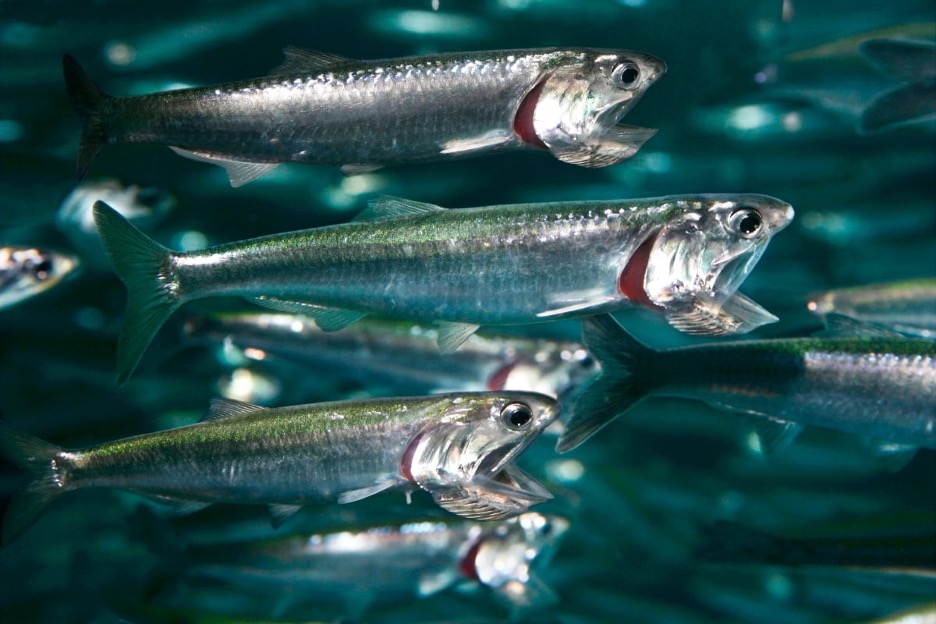Trophic ecology studies how energy flows through food webs; basically who is eating whom in an ecosystem. Understanding the structure of feeding relationships among species in a system helps us to understand why populations may fluctuate in terms of abundance or distribution at different times. These dynamics are particularly important to consider in the face of a changing climate as conditions like increasing temperatures make resources less predictable. Our guest this week is Luke Bobay, who is trying to do exactly this for anchovy in the Pacific Ocean off the US West Coast.
Luke, a 3rd year PhD student in Integrative Biology, is researching the potential influences of climate change on anchovy abundance by studying its ecological effects on their early life stages. Anchovy are forage fish, which means they are eaten (aka foraged upon) by a lot of larger animals such as birds, marine mammals, other predatory fish, and humans. They are also short-lived and therefore we expect their population dynamics to respond pretty quickly to things that are happening in the environment.
For his research, Luke is looking at the larval stage of anchovy. He uses samples and plankton imagery data collected on weeks-long research cruises that Plankton Ecology Lab has conducted during the past six years, as well as samples collected by the National Oceanic and Atmospheric Administration (NOAA) since 1996. The samples that Luke uses are collected using large nets with a very fine mesh that enables the collection of tiny plankton. The imagery data are collected using a sampling technology unique to Luke’s lab called the In Situ Ichthyoplankton Imaging System (ISIIS). ISIIS uses a high-resolution camera to take images of the water column at a very high spatial and temporal scale, allowing the lab to basically take one long continuous image of what’s happening in the top 100 m of the ocean. These images are then run through an AI image classification model that automatically identifies and measures each individual plankter that is recorded. Both the net and the ISIIS also record data about the environment, such as temperature, salinity, and depth. By examining relationships between environmental conditions, the abundance of other plankton, and the abundance and other characteristics of anchovy larvae, Luke explores the factors that may contribute to variability in anchovy abundance.

In Situ Ichthyoplankton Imaging System (ISIIS)
To hear more about the day in the life of an anchovy, as well as Luke’s journey from OSU to another OSU, tune in this Sunday, November 5th live on 88.7 FM or on the live stream . Missed the show? You can listen to the recorded episode on your preferred podcast platform!

Northern anchovy (credit: Monterey Bay Aquarium)
